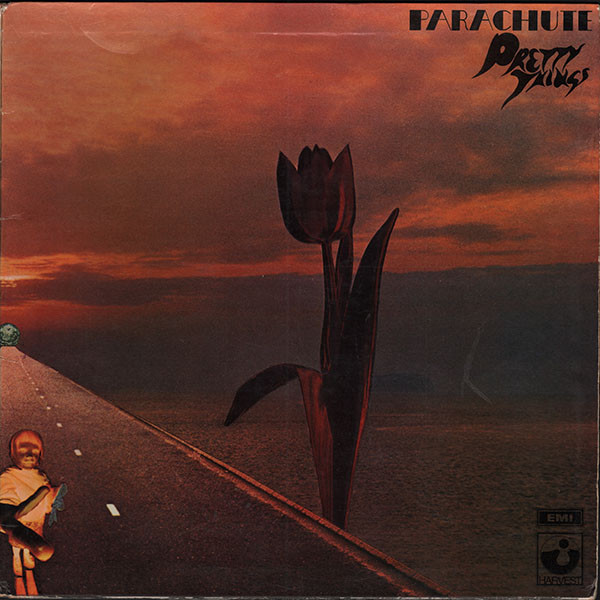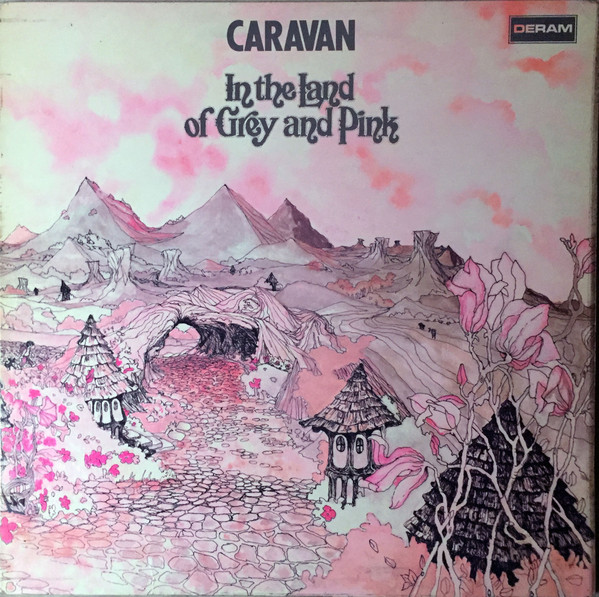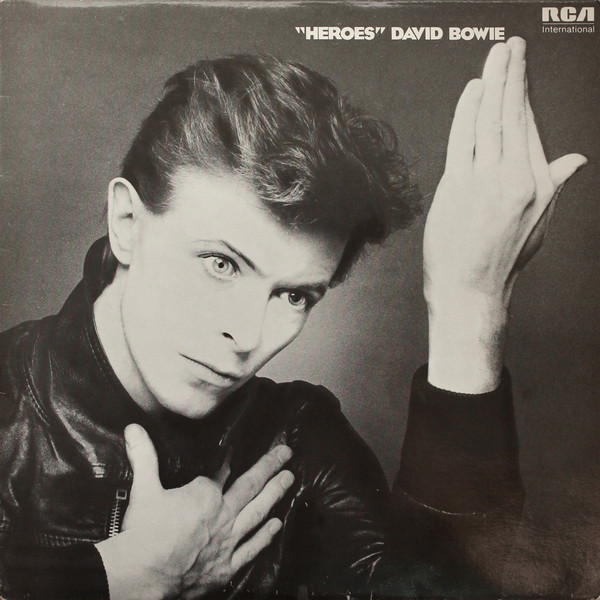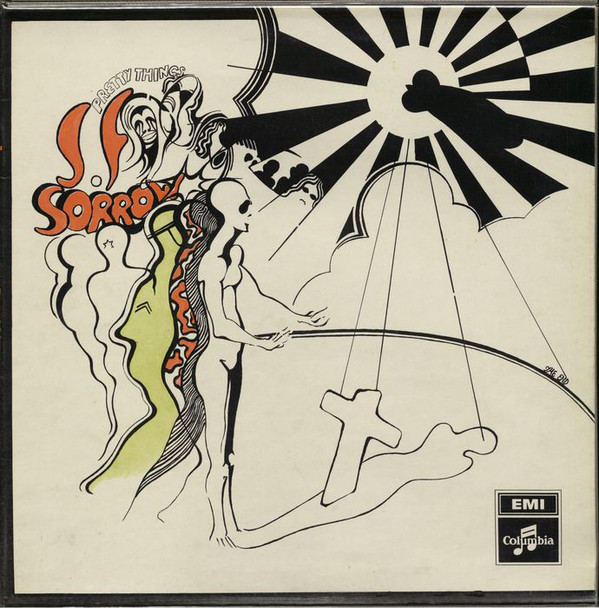It feels like a lifetime ago that I started collecting records, but truth be told I only started, in earnest, relatively recently. I’ve been buying and keeping records since I was a kid, but not collecting. That started with a new pair of speakers 5 years ago.
Those speakers and just about every other piece of equipment I owned at the time are all long gone. They’ve been replaced by better gear and a much better understanding about what records I want to keep in my collection and which ones I’d just as soon part with. At this stage any piece of equipment I add or subtract needs to net me more of one thing – that “live on stage” or “live in the studio” “YOU ARE THERE!” SOUND and all of the elements that add up to it.
Finding that SOUND has and continues to be a journey unlike any other. It’s a journey that gets more exciting and more fun the longer I’m on it. In the era of COVID, it’s a pleasure and a privilege to have an outlet that is at once engaging and transporting whilst never requiring that I leave the comfort of my living room.
This journey has, however, not been without its pitfalls and diversions. I’ve “arrived” quite a few times, only to discover later that I still had a ways to go. And no doubt I still do, but I have learned a few things along the way so far that might help other audiophiles and collectors avoid some of the mistakes I’ve made.
To reproduce music in a way that delivers that “YOU ARE THERE” experience we audiophiles crave, you need records that are capable of conveying it. That means you need records that have been mastered properly from first generation tape where the mastering engineer has succeeded in cutting the lacquer with just the right dynamics.
DYNAMICS are ESSENTIAL for GREAT SOUND
To cut a record with the right dynamics means that the relative volume of each element of the music needs to be right proportionally to the other elements. When the volume of the instruments, drums, percussion, bass, vocals and every other sound in the mix is proportionally right, the sound comes together and we’re treated to the experience of hearing a group of musicians in a studio, in a hall or on a stage playing together in a realistic way. If any of those elements is too loud or not loud enough, the music just won’t translate properly.
A well mastered record with the right dynamics just sounds right. It doesn’t have problems that draw our attention and distract us from the listening experience. It is a sound that allows us to settle in and engage with the music and with the artists who created it. It is a sound that once you know it, you want it, and when a record doesn’t have it it doesn’t matter how good the music on that record is, you will still find yourself eschewing that record for your records that do.
Better Dynamics = HIGHER LISTENING VOLUMES
The right dynamics also means sound that encourages us to turn up the volume and rewards us when we do. I can’t tell you how many records I felt very “ho hum” about until I finally turned the volume up to a level that let me fully appreciate the dynamics of the performance. Records that DEMAND higher volumes are records that have been recorded and mastered with the right dynamics and are often records that have the best sound.
Don’t get me wrong, I’m all for pleasant, non- intrusive background music during dinner and conversation, but that’s not what this audiophile hobby is all about. I have an inexpensive DAC, a laptop and Spotify for that type of listening. When a record can be turned up and uP and UP AND it keeps SOUNDING BETTER, well, that’s a record I want on my turntable and in my collection. Unfortunately, records like that are few and far between.
So what do we get when the dynamics are NOT right? Often we get a BOOSTED TOP END suggesting the mastering engineer was favoring certain elements of the music over others. Records like this, when they’ve been cut from a first generation master tape, CAN give a good first impression. They have for me at least, and I’ve been very content to have some records like this in my collection. But when I eventually played another version that WAS mastered right with the RIGHT dynamics, I could then see that I was distracted by the clarity of the sound on these records and not appreciating their problems.
THE PROBLEM IS THE FRIGGIN’ RECORD!
That’s when I’d realize that those little things that bugged be about a record and that I’d chalked up to the limitations of my system were actually BIG things that had nothing to do with my system and EVERYTHING to do with the record! I harp on this point a lot and I’m going to keep harping on it because, for one, this site IS AFTER ALL called “THE BROKEN RECORD” and two, I just think it is so important to understand and remember. When we play a record and we hear things that we realize we should not be hearing or do not want to be hearing, the problem is usually THE FRIGGIN’ RECORD!
When we hear PROBLEMS and not the SOUND we’re wanting, most of the time the problem is THE FRIGGIN’ RECORD!
I keep forgetting this and I keep making this SAME mistake and start heading down the rabbit hole of “something isn’t right with MY SYSTEM”. NO! It’s not my system dummy, it’s THE FRIGGIN’ RECORD! Luckily I remember this sooner and sooner as time goes on and I don’t waste my time shopping for new gear until I’ve had a chance to sit down and play some records that I know are good sounding. Then I remember that it’s NOT my system, it’s THE FRIGGIN’ RECORD!
Anyway, sorry and where was I? Oh yeah, records with boosted top ends. These records can leave a good first impression, especially if you’re comparing them to a heavy vinyl version which are so easy to improve upon that if you have a vintage copy that’s been cut from a first generation tape, even if it’s not mastered well it will sound like a REVELATION compared to just about ANY 180g remaster.
Examples of RECORDS with BOOSTED TOP ENDS
I wrote about just such a record a few years back when I did a shoot out for The Pretty Things’ S.F. Sorrow. In that article I recommended a version of the record called Real Pretty, a budget twofer that comes with copies of both S.F. Sorrow and Parachute and one that I no longer care for.
If you read that article and went out and bought a copy of Real Pretty and hated it, I do apologize. In my defense I would say that if you read that article and you did buy a copy of Real Pretty and hated it then at least you didn’t buy a copy of the Sundazed reissue which you would have hated even more.
I’d also say that I still stand by some of what I wrote about the version of S.F. Sorrow. For instance:
“the vocals sounded much clearer and with more depth and presence and I found I could enjoy the voices of the individual singers singing the harmonies”
I’d stand by that statement, as well as my conclusions about the Real Pretty version being superior to the Sundazed. But the Real Pretty version of S.F. Sorrow is not an audiophile worthy record and the reason is that the top end is boosted (and there’s no low end which I’ll discuss later in a separate post). This S.F. Sorrow can NOT be played at live volumes without driving you out of the room.
Yes the vocals ARE clear and I do think it was mastered with a first generation tape, but the levels are off and the highs and upper mids get increasingly shrill and irritating as the volume goes up. There is just no opportunity for any space or depth to the soundstage to manifest and the performances simply cannot come to life. Everything that the mastering engineer deemed important is pushed right to the front and acts like a barrier to any element of the music that sits behind it.
I wish I could tell you which version of S.F. Sorrow I would recommend, but I haven’t heard any others. My money is on the UK OG, but prices of those are stratospheric. In fact any OG or early pressing, UK or US, is going to cost you at this point. As I look over pricing on vintage copies of this title my sticker shock is high enough that I’m thinking about giving Real Pretty another listen, just to make sure!

To make matters worse, the version of Parachute that comes with Real Pretty suffers from the same boosted top end that S.F. Sorrow does and might be even worse sounding. In fact, I might even go so far as to deem this version of Parachute unlistenable.
This is reinforced by the fact that I actually DO have a version of Parachute, an album by the way that I much prefer to S.F. Sorrow, that I CAN RECOMMEND, and that version is the OG UK. Man is it a MONSTER! HUGE dynamics! HUGE bass! And it REALLY ROCKS! Once you hear that version you would have say the Real Pretty version is, in fact, terrible.
And good news! OG UK copies of Parachute in good condition are not yet bank breaking like S.F. Sorrow! Clearly it sold better and rightly so. Parachute is, IMO, The Pretty Things best album.

In the meantime, I can recommend another record that was mastered properly and, while not cheap, is much more affordable across the board than S.F. Sorrow and certainly on par with it as a must own. I first read about Caravan’s In The Land of Grey and Pink on The Vinyl Press several years ago and, as with just about every record that Bill Hart writes about, I sat up and took notice.
Last year I was visiting a very small record store in Santa Fe that often has a nice selection of titles and found a US OG of In the Land in pretty nice condition. The first few times I played it, this US version left me with a fairly good impression. It certainly sounded to me like a record cut from a first gen tape which was a concern I had before buying it. I don’t imagine it was a big seller here in the US and it was recorded, mixed and mastered in the UK.
After playing it a few times I did a bit of noodling about on forum threads to see what other collectors thought about pressings of In The Land and I found one contributor who said:
“If you think the US version of In The Land sounds good, you’ve got to hear the UK, it’s even better!”
I had an English teacher in the 9th grade who taught me something that has stayed with me now for nearly 40 years. His name was Mr. Valenti and he used to say “don’t believe ANYTHING you hear and ONLY 50% of what you read.” Of all that he taught me that year, I don’t imagine this was the takeaway he had hoped for, but such is the impressionable young mind.
Anyway, I can’t say that I believe anywhere close to 50% of what posters write about vinyl pressings on forums these days, but I guess I’m a sucker for the gauntlet thrown down. So I bought a UK pressing of In The Land and now that I’ve heard it I can offer my own advice on US vs. UK pressings of In The Land. If you think the US OG version sounds good then you absolutely MUST hear a good UK as there really is NO CONTEST. The UK doesn’t just sound “even better”, it DEMOLISHES the US in every conceivable way!
My UK copy is the “red label” version with 1D stampers. I won’t say it can’t be improved upon, but the “brown label” version generally sells for more and the one I bought is clearly mastered well and from a good tape. It’s also a great recording and a wonderful album.
The US version is, unfortunately, yet another example of a record that, so disappointingly, was mastered with a boosted top end. It hits you hard with a lot of sparkle and attention grabbing highs but offers no there there at higher volumes. I say disappointingly because it DOES sound like the mastering engineer had a first generation tape to work, and that just seems like such a waste.
At this point you might be saying to yourself, well OF COURSE a US budget twofer of The Pretty Things albums is going to suck and OF COURSE the UK version of Caravan’s In The Land is going to sound better than the US version. Just follow THE COUNTRY OF ORIGIN RULE dude (or dudette. Are there any women reading this blog?)! They’re both UK bands and all three records were recorded in the UK!
To this I would say, yes, but it does sound to me like all of the US versions I discuss above were mastered from a first generation master tape, which is the basis of the argument for THE COUNTRY OF ORIGIN RULE. If I’m right, then the problem isn’t the fact that these are US pressings of UK band titles but that the mastering done in the US simply was not on par with what was done in the UK.

I’ll give one more example here that illustrates this point. I own an early US pressing of David Bowie’s Heroes that sounds very good to me, but I have a suspicion that the album could sound even better. I had not heard good things about the UK originals, but I’ve had great luck with Dennis Blackman aka “BILBO” remastered Bowie albums, and Blackman cut a version of Heroes for RCA International in the UK that was released in the early 80’s.
I LOVE Blackman’s version of Hunky Dory which I wrote about here a while back. It’s clear he had first gen tapes to work with and he just nails the RIGHT sound for the album. He also did a wonderful job on his version of Ziggy Stardust. So after hearing good things about Blackman’s remaster of Heroes I suspected THAT was the version to track down.
There appear to be 2 green label RCA International UK versions of Heroes that have several different sets of stampers associated with them. Not all of the stampers have Blackman’s “BILBO” signature in the deadwax. Past experience with Hunky Dory suggested I should seek out one that had “BILBO” on both sides, and that turned out to be not TOO difficult, despite the fact that copies with his mastering credit on both sides tend to sell for a bit more money than those that don’t.
So how did the Blackman reissue sound? Well, there’s good news and bad news. The GOOD news is that the copy I ended up with doesn’t suffer from a boosted top end. The BAD news is that it suffers from no small amount of congestion in the midrange, which, while MUCH BETTER than a boosted top end, still doesn’t amount to a great sounding copy. After playing a few different pressings of Heroes over the years it’s apparent to me that it is a record that already tends to have a fair bit of congestion in the recording. Therefore I suspect the ultimate copy of Heroes will have the least amount of that congestion possible.
The other good news is that my early US pressing faired pretty well in the less congestion department. I’ve not heard anything about German pressings of Heroes (which was recorded in Berlin) but I’m inclined to think that the country of origin rule doesn’t apply to this album.
Which HEROES to get?
Is an early US or US OG the one to get? I wish I could say but mine is clearly mastered well and from a first generation tape and therefore a solid choice. It’s also entirely possible and altogether likely that a UK green label pressing with different stampers, or even a better pressed copy with the same stampers, still IS the one to get. As long as the mastering is well done and from a good tape then we can’t really eliminate the green label as a possibility.
Testing YOUR Records for a BOOSTED TOP END
As a parting piece of advice on figuring out if some of YOUR records have a boosted top end and therefore might be deserving of an upgrade, turning up the volume can be a good test. Assuming your system can play well at a fairly high volume, take a record you suspect has this issue (again, these are often records that sound clearer and more forward at lower volumes) and start cranking it up. If you realize quickly that you need to turn it down, that’s a pretty good indicator.
Still to come, an early 80’s UK green label pressing of Bowies’s The Man Who Sold the World TAKES ON my US OG.
– Stay tuned!
